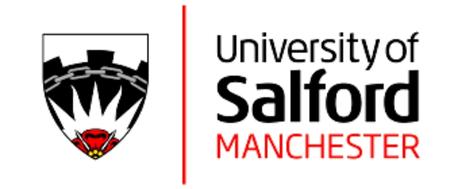
University of Salford
Location
UK
Year Established
1896
Proportion of International Students
11.50%
Student Satisfaction
82.00
Average Living Cost
£15200/year
Average Tuition Fee
£10000/year
98
Times Ranking
801-1000
QS Raking



Introduction
A public research institution, the University of Salford is situated in Salford, England, about 1.5 miles (2.4 km) west of Manchester's downtown. Its roots can be traced back to Salford's Royal Technical Institute, which was founded in 1896. Following the Robbins Report on higher education, this later changed into a College of Advanced Technology in 1956 and attained university status, becoming the University of Salford in 1967. It is situated in 60 acres (240,000 m2) of parkland on the banks of the River Irwell and has about 20,000 pupils. The Royal Technical Institute, Salford, which opened in 1896 after the merging of the 1850-founded Pendleton Mechanics' Institute and the 1858-founded Salford Working Men's College, can be credited with giving rise to the university. The Duke and Duchess of York, later known as King George V and Queen Mary, presided over the Royal Technical Institute in Salford's inaugural ceremony. This event is honored in the university's Redbrick Peel Building and permitted the word "Royal" to be added to the institute's name. Mechanical engineering, chemical manufacturing, textiles, and construction dominated Salford's industrial scene around the turn of the 20th century. This had a significant impact on the subjects that were initially provided in the nine departments. These included building, dyeing, spinning and weaving, domestic work, mathematics, chemistry, electrical engineering, and art. For the first session, 1,240 students registered in these departments. There were initially 19 employees. The Institute changed its name to the Royal Technical College, Salford, in 1921. The institution split into two organizations in 1958; one of them, the Royal Technical College, remained in operation, and the other, the Peel Park Technical College, broke off and adopted the name Salford Technical College in 1961. It later changed its name to Salford College of Technology in 1970, and finally, in 1992, to University College Salford. When Her Majesty The Queen transferred the Royal Charter of the institution on February 10, 1967, the Royal College of Advanced Technology became the University of Salford. Clifford Whitworth served as the university's first vice chancellor, and his name is also on the name of the main library. HRH Prince Philip, Duke of Edinburgh, served as the university's first chancellor and held the position until 1991. While in government, Prince Philip had a strong interest in the institution, which has persisted thereafter. In 2008, he paid a visit to the university's acclaimed acoustics facilities. Aerial view of the campus from 2011, with digitally inserted new structures. In order to create a single university, the University College Salford split off and amalgamated with the University of Salford in 1996. Clifford Whitworth served as the university's first vice chancellor, and his name is also on the name of the main library. HRH Prince Philip, Duke of Edinburgh, served as the university's first chancellor and held the position until 1991. While in government, Prince Philip had a strong interest in the institution, which has persisted thereafter. In 2008, he paid a visit to the university's acclaimed acoustics facilities. Aerial view of the campus from 2011, with digitally inserted new structures. In order to create a single university, the University College Salford split off and amalgamated with the University of Salford in 1996.
